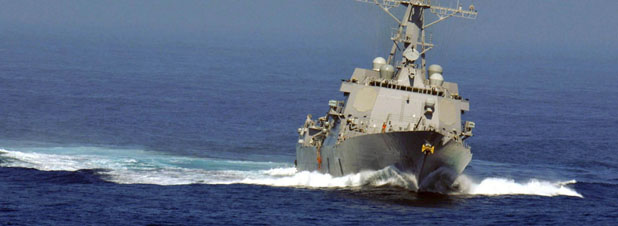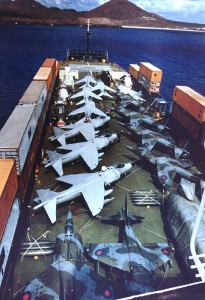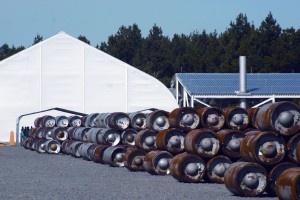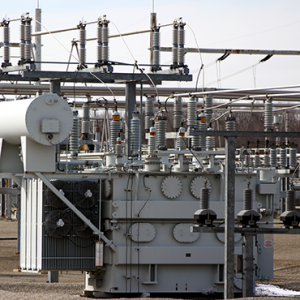
For a distant observer, commenting on alternatives to the DDG Flight III would be difficult without the well written documents by Congressional Research Service writer Ronald O’Rourke. His Navy DDG-51 and DDG-1000 Destroyer Programs: Background and Issues for Congress lists most of the program’s considered possible alternatives, reducing the scope of the issue to selecting evaluation criteria and identifying a specific solution. Besides the considered options there is also a recommendation that could broaden the scope of the discussion:
Conduct a thorough [Analysis of Alternatives (AOA)] in accordance with DOD acquisition guidance for its future surface combatant program to include:
(c) implications of the ability of the preferred ship to accommodate new technologies on future capabilities to determine the most suitable ship to carry [The Air and Missile Defense Radar (AMDR)] and meet near-term [Integrated Air and Missile Defense (IAMD)] requirements and provide a path to far-term capabilities;
(d) implications on future fleet composition;
With the gradual disappearance of frigates from the Navy’s service, the truncation of DDG-1000 to three units, and LCS under critics’ fire, Arleigh Burke is slowly becoming the sole “can-do-all” class of surface combatant. There is an interesting critique of a homogenous ship class force structure related to the history of the Canadian Navy, with the judgment rendered thus:
“Force structure planners should be aware that the history of the RCN shows that naval flexibility cannot be derived from a uniform fleet.”
The author, Kenneth Hansen further elaborates his thesis in another article, concluding that “If the strategic context is complicated, changing, or uncertain, a diversified fleet structure is required.” Armed with such knowledge, let’s step back and reconsider Navy assumptions for its old Future Surface Combatant Program. This envisioned:
– A DD(X) destroyer for the precision long-range strike and naval gunfire missions;
– A CG(X) cruiser for the air defense and ballistic missile defense missions; and
– A smaller combatant called the Littoral Combat Ship (LCS) to counter submarines, small surface attack craft (boat swarms), and mines in heavily contested littoral (near-shore) areas.
Many things have caused the cruiser as originally conceived to become unaffordable, the destroyer (DDG-1000) has grown to the cruiser’s price and size, and LCS is suffering badly from a lack of operable modules. But the concept itself is not dead. The original requirements, changed under the pressures of the economy and a drive for efficiency, asked for an AMDR with a relative capability described as “SPY+30.” The new solution for DDG Flight III has a relative capability of “SPY +15”, called in a GAO report “marginally adequate“. At the same time Ronald O’Rourke reports states:
As part of the [Maritime Air and Missile Defense of Joint Forces (MAMDJF)] AOA, the Navy identified that DDG 1000 can accommodate a SPY+25 radar. As part of a technical submission to the Navy, BIW, the lead designer for DDG 1000 also identified a possible design for a 21-foot radar on DDG 1000. The Navy did not include a variant with this size radar in the Radar/Hull Study.
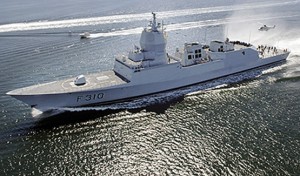
Another conclusion from MAMDJF AOA study was that a smaller number of higher performance ships is preferable to networking less-capable but more numerous ships. On the other hand such a former approach deepens the deficit of cruiser/destroyers. Is there a way out of this trap? As controversial as it seems, it is theoretically possible to reintroduce a hi-lo mix into the surface fleet, consisting of cruisers and frigates. The aim would be to acquire one cruiser and two frigates for a price of two DDG Flight III. The result would be a Navy with a high-capability ship focused on IAMD undistracted by other tasks, such as ASW, with dedicated escorts in numbers allowing it to close the gap in surface combatants hulls. The fleet structure could therefore consist of:
1. Cruisers with the IAMD mission. If DDG-1000 fills this role it can retain its striking capability. Its towed sonar would be eventually cancelled and ASW mission limited to self-defense and shorter ranges. As an intermediate step toward future capabilities, an extant volume search radar could be retrofitted to the three hulls under construction, allowing more time for BMD software development and integration. This cruiser would represent a scaled-down version of CG(X).
2. Frigates would fill the escort mission focused on ASW and anti-air local area defense. For this purpose, a low-end Aegis could be used, possibly combined with a future, economy version of SPY-3 radar. Frigates should resemble the Norwegian Fridtjof Nansen more than the Spanish Alvaro de Bazan-class with a the difference being a higher number of VLS cells. This class promises to be an affordable workhorse of the fleet, doubtful for the DDG Flight III, which looks more and more strategic.
3. DDG-51 and its follow-on class, which opens a discussion about the word “destroyer” in the U.S. Navy. In order to avoid a “can-do-it-all” syndrome, the follow-on class (a differently conceived Flight III perhaps) could specialize in strike and anti-air area defense capabilities without BMD, and limited ASW capabilities similar to the aforementioned cruisers. In other words, this class would represent a return to a more realistic representation of DD(X) idea. A flexible class would be a good companion both to carriers, supporting the strike mission, and to the corvettes below, providing air defense. It is also neutral towards follow-on decisions and permits the class to free up the extra room for needed growth margins.
4. Corvettes, with a mission to “clear littoral clutter” and focus on ASW, ASuW, MCM, and patrol tasks.
Such a mix would also open the path for new technologies like an all-electric drive, a Total Ship Computing Environment (TSCE), or Advanced Gun System (AGS) to develop in the Fleet. New technologies need enough numbers to evolve into something practical, otherwise they become unwanted expensive “gold-plating”. This four-tier structure also offers flexibility for forming surface task forces tailored to changing situations.
Przemek Krajewski alias Viribus Unitis is a blogger In Poland. His area of interest is broad context of purpose and structure of Navy and promoting discussions on these subjects In his country

